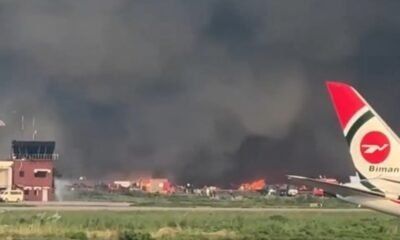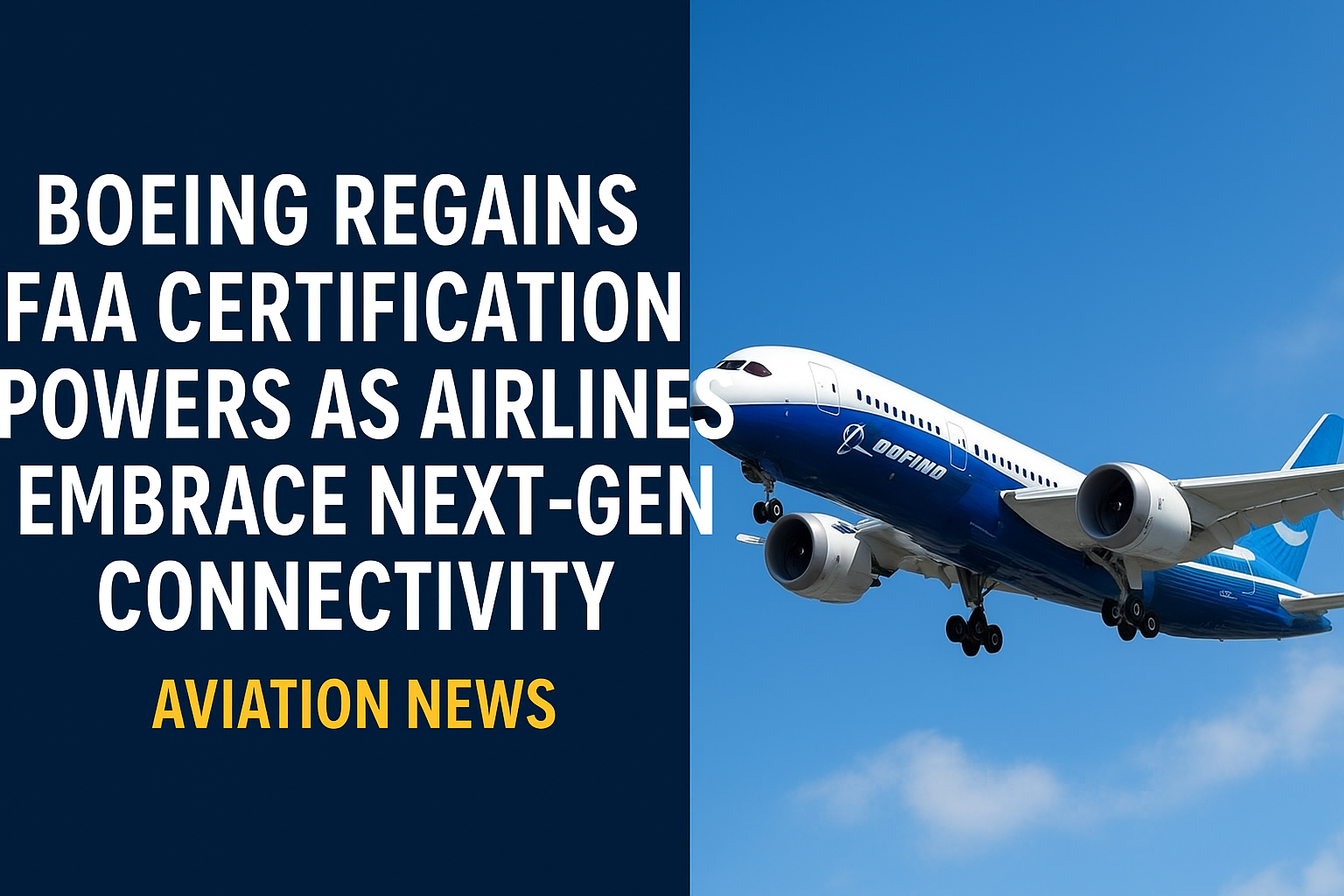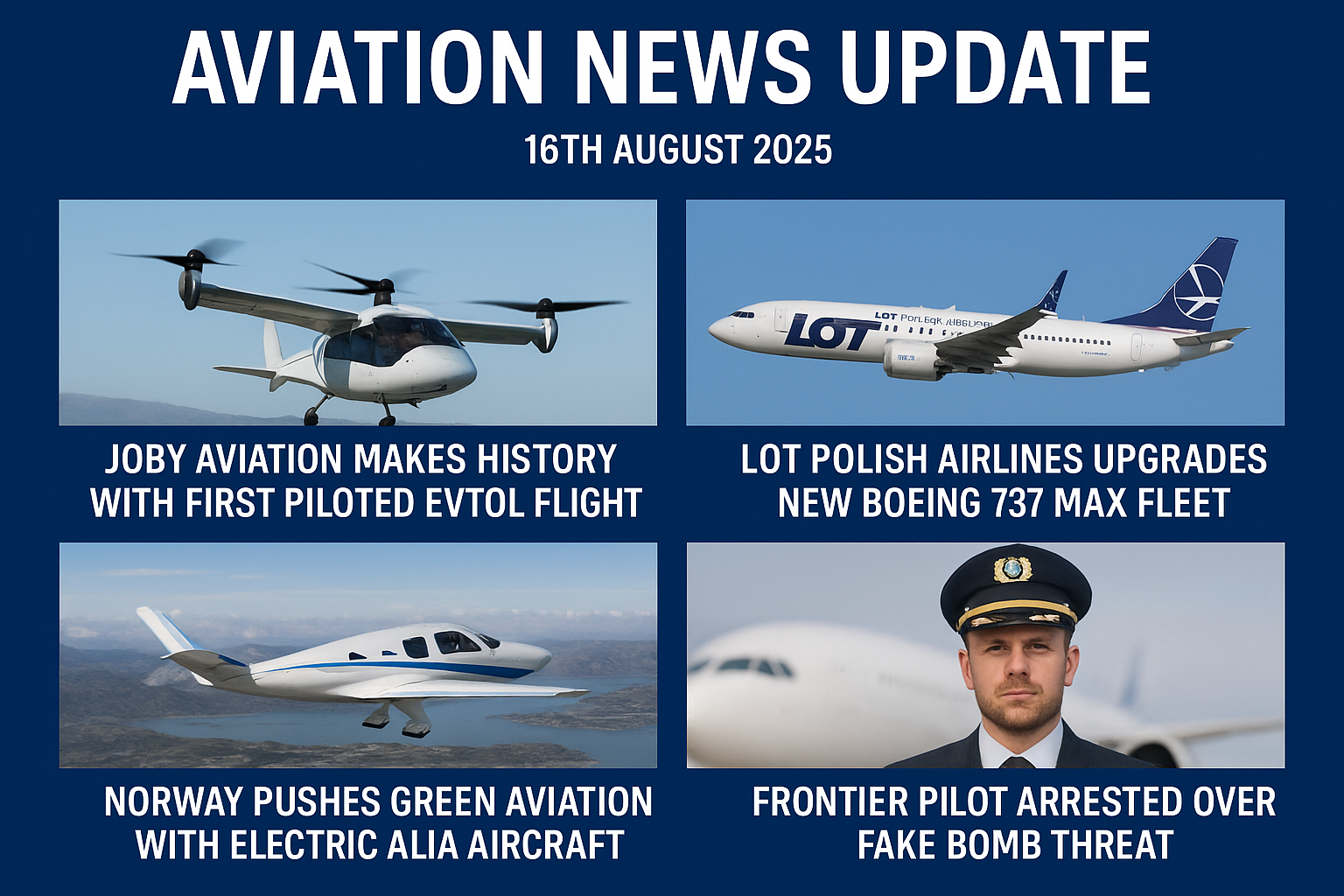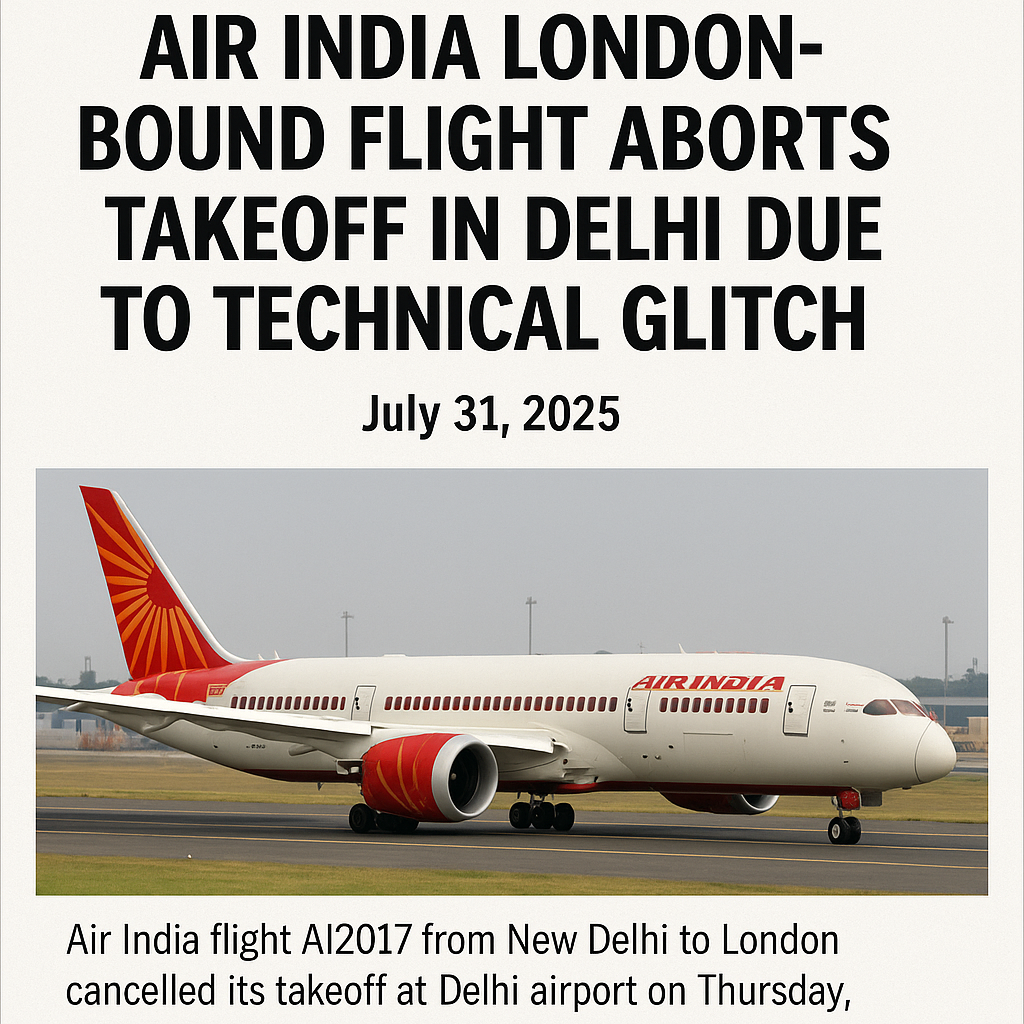AVIATION
What does the final crash report of Yeti Airlines ATR 72 say?
It is likely that the Pilot Monitoring (PM) had misidentified and moved both condition levers to FEATHER when the Pilot Flying (PF) called for flaps 30.
Published
2 years agoon
By
Gems Sierra
After an extensive eight-month and three-day investigation, the inquiry commission, led by former secretary Nagendra Prasad Ghimire, the final aircraft crash investigation report of Yeti Airlines ATR-72 aircraft ‘9N-ANC’ has been made public.
The aircraft crashed near Pokhara International Airport while making approach to land on January 15, 2023.
The investigation Commission submitted its comprehensive report to Sudan Kirati, the Minister of Culture, Tourism, and Civil Aviation today.
The conclusive findings shed light on the critical role of human error in the unfortunate Yeti Airlines plane crash which killed 72 people onboard, emphasizing the importance of implementing preventive measures to enhance aviation safety in the future.

Sequence of Events (The actual story of events happening during last moments of flight)
On 15 January 2023, an ATR 72-212A version 500 was operating scheduled flights between Kathmandu (VNKT) and Pokhara International Airport (VNPR). The same flight crew operated two sectors between VNKT to VNPR and VNPR to VNKT earlier in the morning. For first sector, the aircraft landed on runway 30 of VNPR and thereafter departed from VNPR using runway 12. The accident occurred during a visual approach for runway 12 at VNPR.
This was the third flight by the crew members on that day. As per the CVR recordings it was understood that the flight was operated by two Captains, one Captain was in the process of obtaining aerodrome familiarization for operating into VNPR and the other Captain was an instructor pilot. The Captain being familiarized, who was occupying the left-hand seat, was the
Pilot Flying (PF) and the instructor pilot, occupying the right-hand seat, was the Pilot Monitoring (PM). The take-off, climb, cruise and descent to VNPR was normal. The weather was compatible with VMC enroute to the destination airport. During the first contact with VNPR tower, the Air Traffic Controller (ATC) assigned runway 30 for the aircraft to land. But during the later phases of flight the flight crew, without mentioning any reason for changing the allocated runway, requested and received clearance from ATC to change runway 30 to 12 for landing.

At 10:51:36, the aircraft descended from 6,500 feet at fifteen miles away from VNPR and joined the downwind track for Runway 12 to the north of the runway. The aircraft was visually identified by ATC during the approach. At 10:56:12, the pilots extended the flaps to the 15
degrees position and 46 seconds later they selected the landing gears lever to the down position.
At 10:56:27, the PF disengaged the Autopilot System (AP) at an altitude of 721 feet Above Ground Level (AGL). The PF then called for “FLAPS 30” at 10:56:32, and the PM replied, “Flaps 30 and continue descent. The flight data recorder (FDR) data did not record any flap surface movement at that time. Instead, the propeller rotation speed (Np) of both engines decreased simultaneously to less than 25%1 and the torque (Tq) started decreasing to 0%, which is consistent with both propellers going into the feathered condition. The feather condition is not recorded in the FDR parameters. On the cockpit voice recorder (CVR) area microphone recording, a single Master Caution chime was recorded at 10:56:36. As per CVR readout, the flight crew then carried out the “Before Landing Checklist” without identifying the flaps were not to the 300 position, before starting the left turn onto the base leg. During that time, the power lever angle increased from 41% to 44%. At that point, Np of both propellers was recorded as Non-Computed Data (NCD) in the FDR and the torque (Tq) of both engines was at 0%. When propellers are in feather, they are not producing thrust.
When both propellers were feathered both engines of 9N-ANC were running in flight idle condition during the event flight as per design to prevent overtorque. As per the FDR data, the
engine turbo machine were functioning as expected considering the propeller were feathered. At 10:56:50 when the radio altitude callout for five hundred feet3 was annunciated, another “click” sound was heard4. The aircraft turned to the left and reached a maximum bank angle of 30 degrees. The recorded Np and Tq data remained non-computed, in line with propellers being in feather condition. The yaw damper was disconnected four seconds later. The PF consulted the PM on whether to continue the left turn and the PM replied to continue the turn. Subsequently, the PF asked the PM on whether to continue descend and the PM responded it was not necessary and instructed to apply a little power. At 10:56:54, another click was heard, followed by the flaps moving to the 30 degrees position.

When ATC gave the clearance for landing at 10:57:07, the crew did not respond to the tower, the PF mentioned twice that there was no power coming from the engines. The FDR data shows that at 10:57:11, the power levers were advanced first to 62 degrees then to the maximum power position in 2 seconds. It was followed by a “click” sound at 10:57:16. One second after the “click” sound, the aircraft was at the initiation of its last left turn at 368 feet AGL, the high- pressure turbine speed (Nh) of both engines increased from 73% to 77%.
It is noted that at 10:57:18, in the very last stage of flight, the PF handed over control of the aircraft to the PM. At 10:57:20, the PM (who was previously the PF) repeated again that there was no power from the engines. At 10:57:24 when the aircraft was at 311 feet AGL, the stick shaker5 was activated warning the crew that the aircraft Angle of Attack (AoA) increased up to the stick shaker threshold.
At 10:57:26, a second sequence of stick shaker warning was activated when the aircraft banked towards the left abruptly. Three seconds later, the radio altitude alert for two hundred feet was
annunciated, and the cricket sound and stick shaker ceased. At 10:57:32, sound of impact was heard in the CVR. The FDR and CVR stopped recording at 10:57:33 and 10:57:35 respectively.
The actual conclusion as stated in the crash investigation report has been illustrated as follows:

Findings
1. The aircraft possessed a valid certificate of airworthiness and registration at the time of the occurrence. The aircraft departed Tribhuvan International Airport (TIA) with no known defects.
2. The cockpit crew were qualified and certified in accordance with the rules and the regulations of the Civil Aviation Authority of Nepal (CAAN).
3. Both the flight crew members had adequate rest and the duty time was within the prescribed limit prior to the flight.
4. The aircraft was operating within the performance limitations as per its Flight Manual. The weight and Center of Gravity (CG) were within the prescribed limits.
5. The aircraft was maintained as per the requirements. No maintenance work was found to be overdue. And all maintenance records had been maintained properly.
6. There was no evidence of aircraft control systems, structural, or power-plant failures
before the ground contact. All damages to the aircraft occurred after the impact.
7. VMC prevailed at Kathmandu and within the Pokhara valley at the time of the aircraft‟s
approach at PHR. The whole flight was conducted under VFR.
8. The visual approach circuit pattern followed by the flight for RWY12 did not meet the
criteria for a stabilized visual approach. No visual trajectory was published for RWY 12.
9. Aerodrome obstacle data and information on facilities available at Pokhara International Airport (PHR) were published in Airmen Information Publication (AIP) Nepal and became effective on December 29, 2022, while the Air Traffic Service Instrument Flight Rules procedures and holdings becoming effective on February 23, 2023.
10. Air Traffic Services Regulation was not coordinated with that of Aerodromes and not
considered within the certification process.
11. The MOC carried out by the operator and approved by the regulator was inadequate.
12. The MOC carried out by one of the domestic airline planning to operate at PHR identified “Lack of published data of Pokhara International airport in AIP” as a Hazard of High risk category, creating the unsafe event “Crew confusion and disorientation” and ultimately the possible outcome as Controlled Flight into Terrain (CFIT).
13. The approach on RWY12 was first attempt for the PF and third for the PM since the start of operations at PHR.
14. Company trainings prior to clearance to PHR were found insufficient for the crew. Skill based training for new airport was not given to the crew.
15. The checklists were not performed by the crew in compliance with the SOP.
16. Following the un-intentional feathering of both engine propellers, the flight crew failed to identify the problem and take corrective actions despite the CAP cautions. The PF owned a noise-cancelling headset whereas PM did not.
17. It is likely that the PM had misidentified and moved both condition levers to FEATHER when the PF called for flaps 30 without appropriate crosscheck loop as per CRM training.
18. The PF did not visually crosscheck the position of Flaps 30 and confirmed it.
Probable cause
The most probable cause of the accident is determined to be the inadvertent movement of both condition levers to the feathered position in flight, which resulted in feathering of both propellers and subsequent loss of thrust, leading to an aerodynamic stall and collision with terrain.
Contributing Factors
1. High workload due to operating into a new airport with surrounding terrain and the crew missing the associated flight deck and engine indications that both propellers had been feathered.
2. Human factor issues such as high workload and stress that appears to have resulted in the misidentification and selection of the propellers to the feathered position.
3. The proximity of terrain requiring a tight circuit to land on runway 12. This tight circuit was not the usual visual circuit pattern and contributed to the high workload. This tight pattern
also meant that the approach did not meet the stabilised visual approach criteria. Use of visual approach circuit for RWY 12 without any evaluation, validation and resolution of its threats which were highlighted by the SRM team of CAAN and advices proposed in flight procedures design report conducted by the consultant and without the development and approval of the chart by the operator and regulator respectively.
4. Lack of appropriate technical and skill based training (including simulator) to the crew and proper classroom briefings (for that flight) for the safe operation of flight at new airport for visual approach to runway 12.
5. Non-compliance with SOPs, ineffective CRM and lack of sterile cockpit discipline.
In Summary, the main contributing factor for the crash was the pilot’s error in selecting Propeller Conditions Lever for Flaps lever subsequently causing the loss of trust and uncontrollable attitude in slow flight in a crucial moment for approach to land.

You may like
-


Massive Fire Erupts at Dhaka’s Hazrat Shahjalal International Airport — Flight Operations Suspended
-


Nepal Airlines’ Guangzhou Flight Postponed: Mismanagement or Diplomatic Delay
-


Boeing Regains FAA Self-Certification Rights, Airlines Eye New Connectivity Upgrades
-


Aviation News Update – 16th August 2025
-


Visitors’ Pass Banned at Tribhuvan International Airport
-


Air India London‑bound Flight AI2017 Aborts Takeoff in Delhi Due to Technical Glitch (July 31, 2025)
